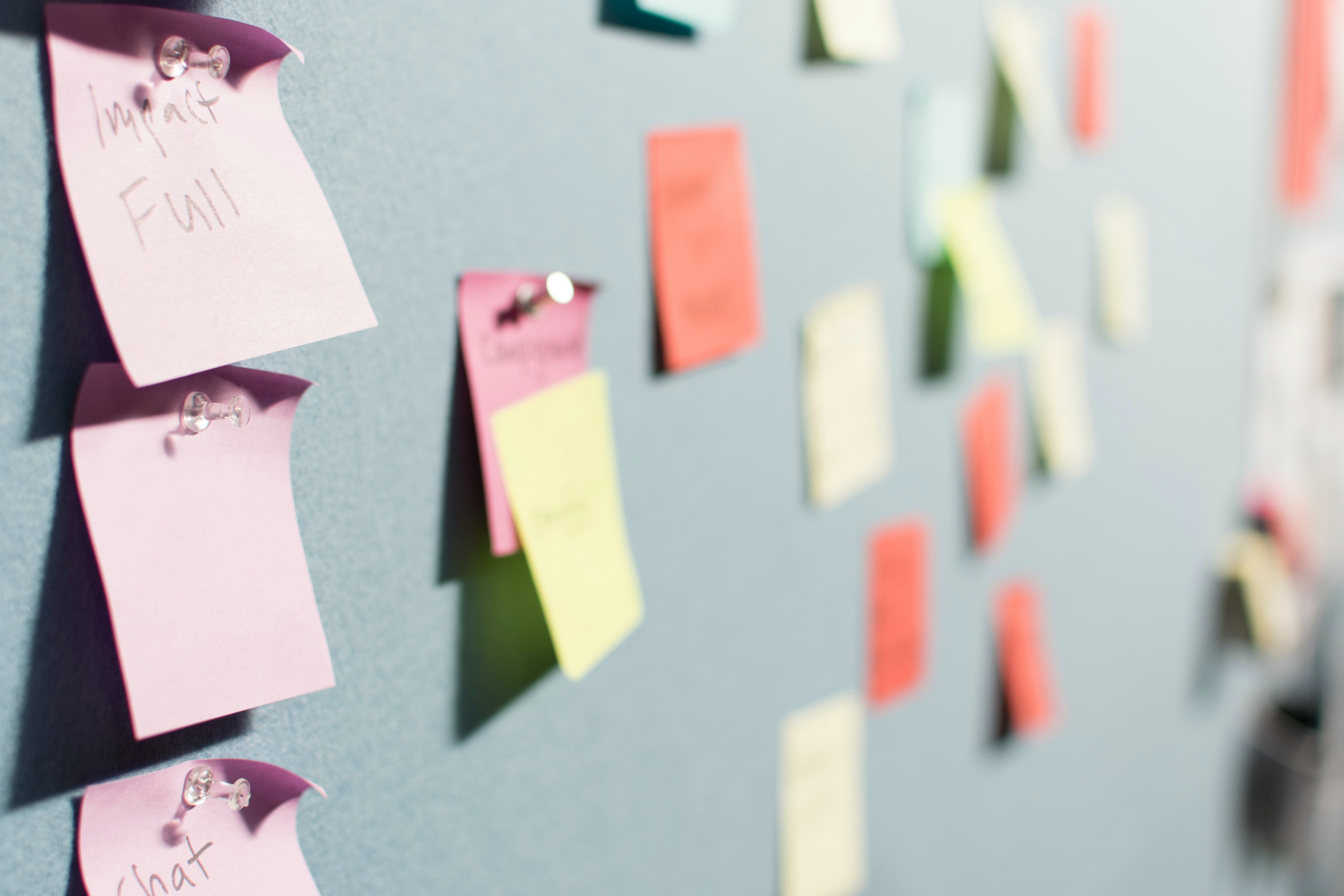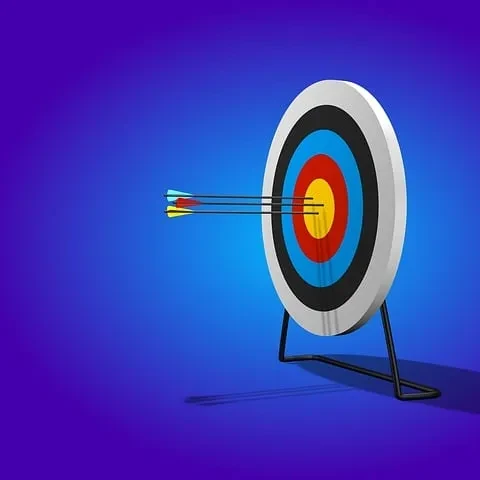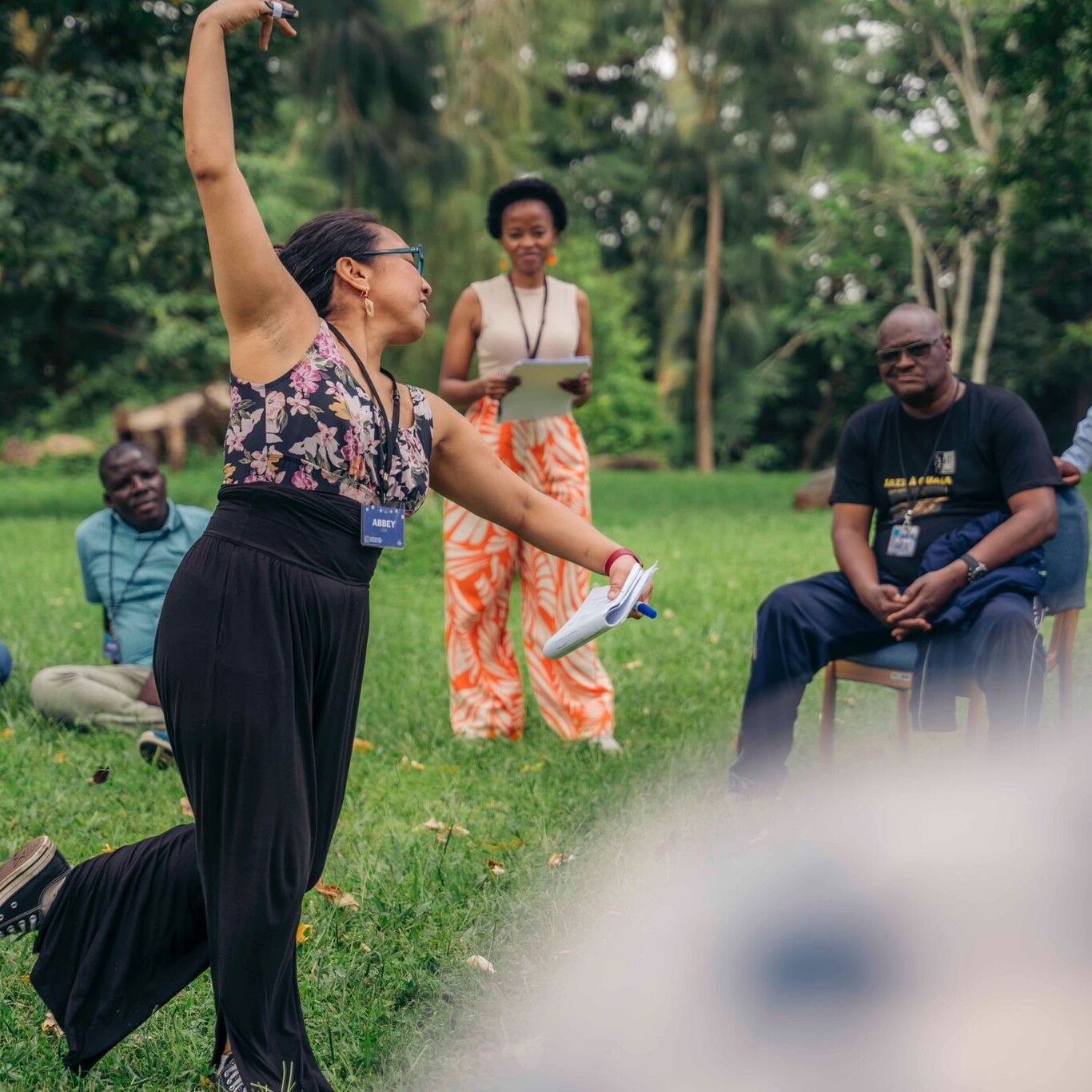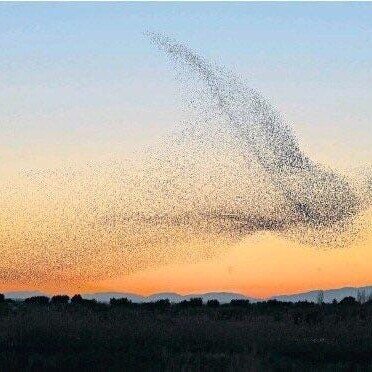By Fiona McKenzie , Alli Edwards , Thea Snow and Louise Baldwin
We have been watching with awe as so many people in and around government tackle the increasingly complex challenges of our turbulent times. Despite (or perhaps even because of) the immense changes to how we work and learn together in the last few years, we have come to recognise the necessity of learning across boundaries.
Since 2021, the excitement around Orange Compass’ paper ‘Building a culture of learning at scale: learning networks for systems change’ has grown. As the conversations generated by the paper continue, so has the desire for more insights into what these concepts look like in action. There has been growing demand to partner with teams and organisations as they apply these mindsets, processes, and structures to their efforts towards innovation and the public good.
Together, Orange Compass and the Centre for Public Impact ANZ have spent the last few months reflecting on the paper. In our work, we have been engaging in and supporting learning networks in different ways, and have come to realise that there is much more to be shared. While creating language for these ideas and frameworks is immensely valuable and energising, it is only the first step. When these concepts are put into practice, they become messy, more subjective, and sometimes even more inspiring. As theory meets reality, real learning occurs.
With this in mind, we are hoping to build on the work that the paper began by creating a playbook which offers frameworks, tools, and activities to support people wanting to build, grow, and sustain learning in and across their organisations.
In this blog, we set out some of the insights and deeper questions that have been emerging as we apply and embody the principles set out in the report in our own work — insights and questions we hope to engage with through the playbook.
1. Take a decentralised approach
The concept:
-
-
- Involve network members in the creation of learning and feedback processes.
- Create opportunities for interaction between participating members and enable autonomous nodes or self-directed learning sub-groups to operate within the network.
- Create a learning network of diverse actors and voices from across the system of interest.
-
The reality: Many of us have had hierarchical approaches ingrained into our ways of working, which means that self-direction does not just happen even when ‘permission’ has been granted or authorisation is not required. We have learnt that groups need support in alternative modes of decision-making and governance to enable them to embrace the opportunity.
What this asks of us: How might we let go of the power that comes with leadership and embrace a stewardship mindset?
2. Structure for emergence
The concept:
-
-
- Include mechanisms to help navigate tensions and manage the complexity of cross-sector relationships.
- Embed structures that serve self-organisation, including governance processes that facilitate ongoing relational management.
- Ensure processes enable different voices, perspectives and knowledge to be brought to the table.
-
-
The reality: Participating in a learning network means accepting that you are not ‘in charge’ in a traditional sense. Instead, learning networks are supported in their self-organisation through simple structures. And structure emerges through rules.
The goal here are simple rules that foster the exchange of knowledge and the emergence of new ideas, behaviours, actions, and groupings. This is about creating structures that reveal new patterns rather than perpetuate old ones.
For example, this might include alternative modes of decision-making and governance. Whereas traditional governance can focus on contracts and agreements, network governance is designed to facilitate connections between members, derive new understandings, and navigate tensions. We are often not aware of the constraining rules we have set. Structuring for emergence requires intentionally signalling permission for the unexpected to emerge — in everything from the invitation, design, learning context, and conversations.
What this asks of us: What simple rules might enable surprise, responsiveness, and emergence?
3. Let go of certainty
The concept:
-
-
- Help network members to see learning (and unlearning) as a strength rather than a threat.
- Create space for surfacing perspectives, assumptions, mental models, and beliefs.
- Become aware of the perspectives you are working with and loosen your grip on certainties.
-
-
The reality: At the start, we are excited by the opportunities to unlearn and do things differently, and we can forget how threatening and scary it can be when what we thought to be true is challenged. Unlearning and new learning require trust, engagement, and a willingness to be uncomfortable.
We have learnt that we need to normalise this discomfort in advance rather than trying to remove or discount it. The doubt, fear, and insecurities that can come from grappling with long-held beliefs are real, and they matter. As practitioners, we must create time and space for this processing rather than try to minimise or ignore it.
What this asks of us: How might we let go of the need to be experts and sit with the discomfort of unlearning and uncertainty?
4. Build trusted relationships
The concept:
-
-
- Create processes to foster ties and trust across the learning network.
- Establish mutual respect and shared values.
- Appreciate the different competencies and contributions of partners.
-
The reality: Over time, it dawned on us that this could be interpreted as building friendships. And if that occurs, then that is wonderful. However, trusting relationships do not mean agreeing on everything, avoiding conflict and difficult conversations, or even being friends. What it does mean is trust that each person is acting with integrity towards a shared purpose, and while there may be differences, each person is participating with good intent. Getting beyond ‘politeness’ is critical here, and the art of dialogue is a critical enabler.
What this asks of us: How might we think deeply about where consensus is needed, and where difference can be held and used as a constructive force?
5. Install boundary spanners
The concept:
-
-
- Make space for and invite ‘boundary spanners’ into the network.
- Share lessons within and beyond the organisation.
- Acknowledge their role in crossing knowledge and organisational boundaries and providing ties within the network and beyond.
-
The reality: Boundary spanners might be used to navigating across differences, but they can often arrive unsure why they have been invited into what can feel like a closely connected group. It is common for them to initially feel like they do not ‘belong’ or add value.
Yet, they bring essential insights and alternative perspectives that drive learning and reveal challenging truths for the group to process. Actively supporting those who are not ‘inside the tent’ is critical, including reframing their role in the learning process and the value they bring.
What this asks of us: How might our practices and ways of working support boundary spanners while also normalising and distributing the responsibility for sharing learning across teams and divisions?
6. Co-develop a learning strategy
The concept:
-
-
- Create the means and opportunities for network members to make decisions collaboratively.
- Invite network members to co-develop a learning strategy.
- Keep the strategy adaptable and continually evolve based on evidence and reflection.
-
-
The reality: Again, this point can be misinterpreted as requiring consensus. Good collaboration allows for differences of opinion and the creation of spaces for exploring different hypotheses.
We have learnt that allowing ‘sub-groups’ to emerge and pursue their own learning question is critical. This links to our point around structuring for emergence.
It is also critical to ensure that there are mechanisms for the discoveries of each sub-group to contribute back to the learning of the whole. It can be useful to see each sub-group as an ‘investigative team’ whose jobs are to bring their findings to the network. As this happens, the learning strategy (and learning questions) should be updated, and the linkages between sub-group insights constantly reinforced. This is about creating coherence rather than consensus.
What this asks of us: Which tools and approaches help teams embed learning and experimentation in ‘business as usual’ and enable transparency and accountability in sharing back?
7. Undertake collective sensemaking
The concept:
-
-
- Schedule dedicated time within the project to reflect together, rather than as a one-off end reflection.
- Design processes for collective sensemaking — the co-constructing of meaning and collective generation of possibilities and future actions.
-
The reality: With pressures to ‘get work done’, taking time to learn and reflect together can seem like a luxury. However, that is where the real work happens, proving even more critical than anticipated.
In this mode, learning informs action in real-time and is done in context, not as abstract ‘learning time’ outside the system or the work. Without taking time to grapple with implications and bring learning into reality, there is a risk that learning networks become separate to, rather than a part of, systems change.
Co-inquiry is ‘real work’. It is an act of change if and when it leads to the letting go of old patterns of knowing, being, and doing — and brings into practice new possibilities.
What this asks of us: How might we prioritise taking the time to make sense of things together and challenge the usual patterns of action so that it informs the work we are doing in real-time?

8. Encourage network members to take experimental action
The concept:
-
-
- Generate, harvest, and interpret rapid feedback from diverse sources.
- Create iterative learning cycles that enable the surfacing and testing of assumptions and alternative hypotheses.
- Engage in sensemaking with data from the wider systems to detect larger shifts in patterns and trends.
-
-
The reality: Learning as action requires a different skill set. It also requires understanding how challenging and scary it can be to put unfinished work, untested ideas, and even messy prototypes out into the world. We have been trained to arrive at ‘the answer’ and take care with how we portray our views, lest they be used against us, particularly in high-stakes systems change.
Taking the seed of an idea for testing in the real world can feel risky. It requires time and effort to help participants overcome this fear and resistance. Starting small with low-risk ‘tests’ can build skills and show the benefits (and the fun) of finding new insights or even being proven wrong.
What this asks of us: How might we generate curiosity and the capability to leverage action learning in day-to-day activities through an experimental mindset?
9. Incorporate critical reflection
The concept:
-
-
- Articulate the value of generative learning, capacity building, and transparent communication.
- Create processes that allow time for critical reflection.
- Design and develop methods of surfacing differences in how a group sees, understands, and responds to situations.
-
-
The reality: Stepping back and surfacing differences is essential to enabling learning networks to take new leaps and ‘level up’. Finding the right time to enter into a conversation that delves beyond consensus and looks more deeply into systemic patterns, trends, and tensions is still a balancing act. But, more and more, we lean towards this sooner rather than later.
Rather than breaking trust or unsettling relationships, fostering a more systemic dialogue as soon as possible helps “loosen certainties” and plants the seeds for new rounds of learning, unlearning, and collaboration.
What this asks of us: How might we step back from the more obvious ‘symptoms or events’ we are observing, to engage in dialogue that surfaces differences and explores patterns, trends, and tensions in generative ways?
10. Build a collective memory
The concept:
-
-
- Define processes for capturing, distilling, applying, and sharing knowledge.
- Co-create the infrastructure for storing key information and lessons as collective memory.
- Explore responsive processes that are more simple and place-based, as well as technology platforms to support this work.
-
-
The reality: If not already skilled in knowledge management, it can be surprising to discover that this seemingly simple task is not easy. Having tried a range of technologies and digital platforms, we have gone back to basics and reverted to paper. Too much information across many channels means the work gets lost in the noise.
In one instance where we regularly ‘convened’ a learning network, we documented the evolution of their ‘theory of change’, insights, experiments and prototypes, and printed it on paper. Their learning journey filled a whole wall. Each time we met, the network had time to orient themselves through this journey map before they moved on to the next chapter.
This provided a means of incorporating shared learnings, reflecting on shared decisions, and creating a sense of pride and accomplishment. Making this an everyday part of the work helps to make this collective memory stronger.
What this asks of us: How might we create practices, spaces, and artefacts that document our journey, build a collective memory of where we have been, and show the possibilities of where we might go?
11. Create a simple evaluation framework
The concept:
-
-
- Include simple metrics such as indicators and milestones for measuring how enabling conditions are being met.
- Support the ongoing adaptation of a learning network.
- Develop evaluation questions about more abstract things like how well people work together, the new behaviours and practices developing, or even confidence and capability to engage with difference and unlearn.
-
-
The reality: An evaluation framework is about creating meaningful signals of progress and measures on the learning network’s readiness and maturity. Keep it simple and doable, and remember that it is important to revisit these questions or indicators if they are not quite right.
Creating learning questions (and learning about the learning questions) might seem like a never-ending loop. Still, it is this meta-level reflection of how the learning is happening, how the network is working together, and what can be done differently over time that will hold the network to its purpose.
It might sustain the network or, in some cases, signal that the network is no longer needed (we don’t need more rusted-on committees and bureaucracies here people). Sometimes the purpose has been served, and the beauty of a network is also in its ability to let things go.
What this asks of us: How might we use evaluation as a meaningful practice to further our learning while keeping us aligned with our values? How might we know when a network is ‘done’?
What happens now?
In this article we have posed as many questions as answers. These concepts ask us to do, think, and relate to each other in ways that may look different to what we are used to. Luckily, there are practical tools and approaches that help us rise to the occasion. This led to our final epiphany (for today) — why not share these practices and tools more widely? Having tested many techniques and mechanisms to support learning networks, we are exploring the appetite for a playbook that supports the development of learning as a superpower to drive action and impact.
We want this playbook to take these practical approaches to the next level and go into more depth on how we navigate the messiness and reality of these concepts. But we can’t do this alone. We need partners to help us make this dream a reality.
We’re looking for funders interested in supporting us to capture and document what it takes to build cultures of learning at scale — from the individual to system-wide.
We’re looking for people and organisations who have have been trying to learn across boundaries — we want to hear you stories and lessons learned.
We’d also love to hear from you if you’re interested in embracing the practices and mindsets set out in this blog but don’t know where to start — we’d be excited to explore how we might work together to support you.
If you are a funder, have a story to share, or are keen to learn with us, feel free to get in touch with [email protected].
In the spirit of learning, we’ll share our journey as we move forward with this work, so stay tuned!
By Fiona McKenzie (Orange Compass), Alli Edwards (Centre for Public Impact), Thea Snow (Centre for Public Impact) and Louise Baldwin (Design Lab, Queensland University of Technology)
originally published at Centre for Public Impact

Network Weaver is dedicated to offering free content to all – in support of equity, justice and transformation for all.
We appreciate your support!



